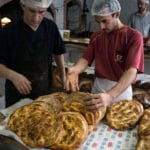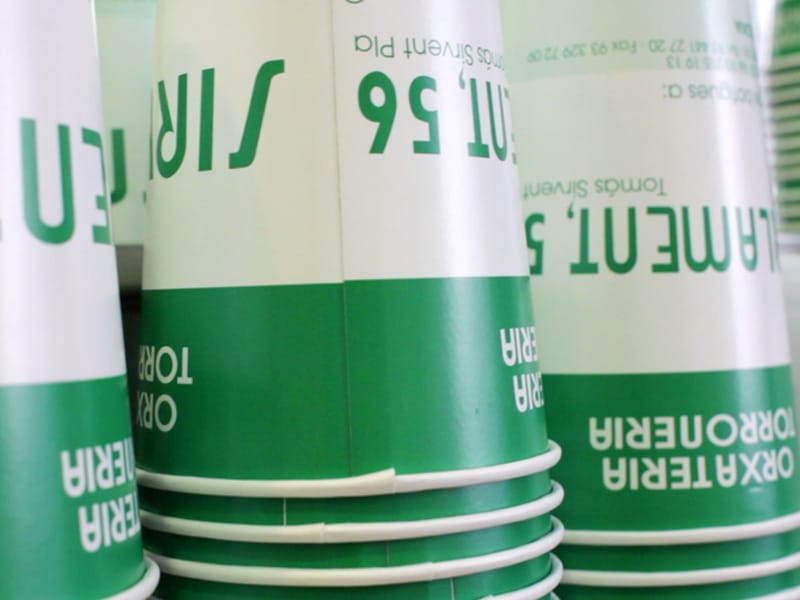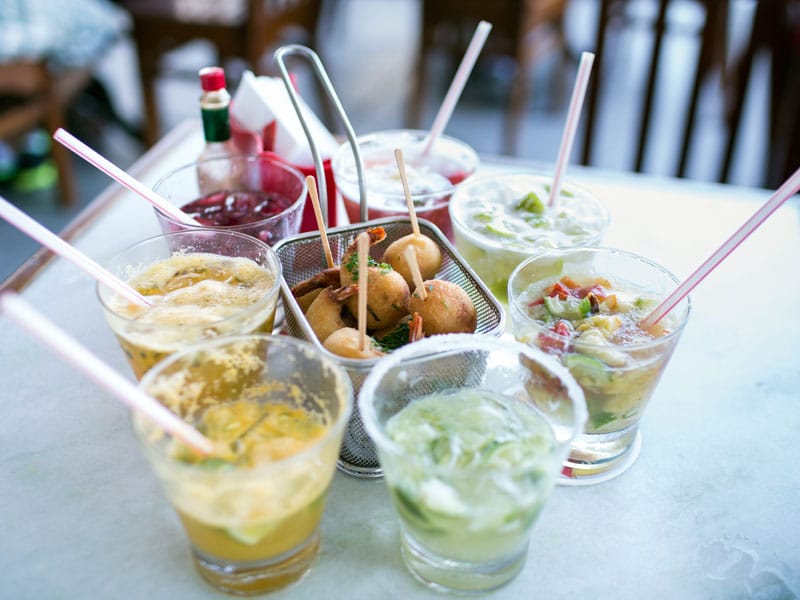Be it kvass in Russia or boza in Turkey, every nation seems to have one of their own, a locally loved drink that to most outsiders comes off as a particularly strange brew. In Spain, that drink is horchata, a unique and deliciously refreshing concoction made from chufas (tigernuts), water and sugar. Served chilled, horchata is beloved all over the peninsula.
In Barcelona, there’s really only one place to try the stuff: Horchatería Sirvent. In fact, no visit to the city is complete without stopping by this Barcelona institution, founded in 1920 by Tomás Sirvent and now managed by members of the third generation of the Sirvent family. The faithful line up here in droves during the summer months, waiting with ticket in hand to sip the best horchata de chufa in town.
Sirvent’s horchata is made the traditional way, that is, as it’s made in Valencia. With its loose, sandy soil and moderate climate, Valencia boasts ideal conditions for growing tigernuts. The tigernut is not actually a nut, but a small tuber whose juice is used to make horchata. The Valencian town of Alboraya is well known for the quality of its horchata. Just as “little green peppers” are associated with Padrón in Galicia, chufas from Alboraya are renowned for their sweet, intense flavor.
To many an acquired taste, horchata goes down sweet with a slightly bitter aftertaste. Catalans routinely triple-park their cars to run in for a Venti-size cup to go or for larger, family-size containers. For those who can’t get enough, Sirvent sells takeaway horchata in 1, 1.5 and 2-liter plastic bottles – priced, respectively, at €4.30 (€3.90 if you bring your own bottle), €6.25 (€5.85) and €8.20 (€7.80). Horchata will keep in the refrigerator for two to three days.
In addition to horchata, Sirvent also offers turrón (a kind of nougat), ice cream and granizados, which are semi-frozen drinks similar to a Slurpee. While the granizado de café we tried was uninspired and too sweet, the granizado de limón was like chunky lemonade, a perfect remedy for the hot sun. Horchata and granizados are sold by the glass: €2.50 for a large, €1.80 for medium and €1.25 for small.
Sirvent is closed for three months during winter and reopens in April following Semana Santa (Easter). The original location at Carrer del Parlament 56 feels more authentic, often like a block party. But for a quick fix, especially for those averse to lines, the Balmes location serves the same artisanal horchata.
 August 8, 2016 Quiosque do Português
August 8, 2016 Quiosque do Português
It might have become one of the more fashionable places in Rio for a caipirinha, yet the […] Posted in Rio January 14, 2019 Going Deep
January 14, 2019 Going Deep
As the calendar year turns over, we’ve grown accustomed to the barrage of lists telling […] Posted in Tbilisi, Special category July 21, 2014 Tophane Tarihi Taş Fırın
July 21, 2014 Tophane Tarihi Taş Fırın
Every year, for one month only, bakeries across Istanbul churn out round, flat, yeasty […] Posted in Istanbul
Hollis DuncanHollis Duncan
Published on August 30, 2012
Related stories
August 8, 2016
RioIt might have become one of the more fashionable places in Rio for a caipirinha, yet the name of this father-son joint – “Portuguese Kiosk” – suggests humility. Indeed, the pair got their start a decade ago in one of the numerous huts that line the city’s beaches. While the majority of their competitors served…
January 14, 2019
Special category | By Culinary Backstreets
Special categoryAs the calendar year turns over, we’ve grown accustomed to the barrage of lists telling us where to travel during the next 12 months. Oftentimes these places are a country or even a whole region – you could spend an entire year exploring just one of the locations listed and still barely make a dent.…
July 21, 2014
IstanbulEvery year, for one month only, bakeries across Istanbul churn out round, flat, yeasty loaves of Ramazan pide bread. Before Muslims break their fast at sundown, they hurry to buy these addictively chewy pides, which are essential to the iftar meal here. Some bakeries rely on machines to shape the pide and stamp the traditional…
















































































